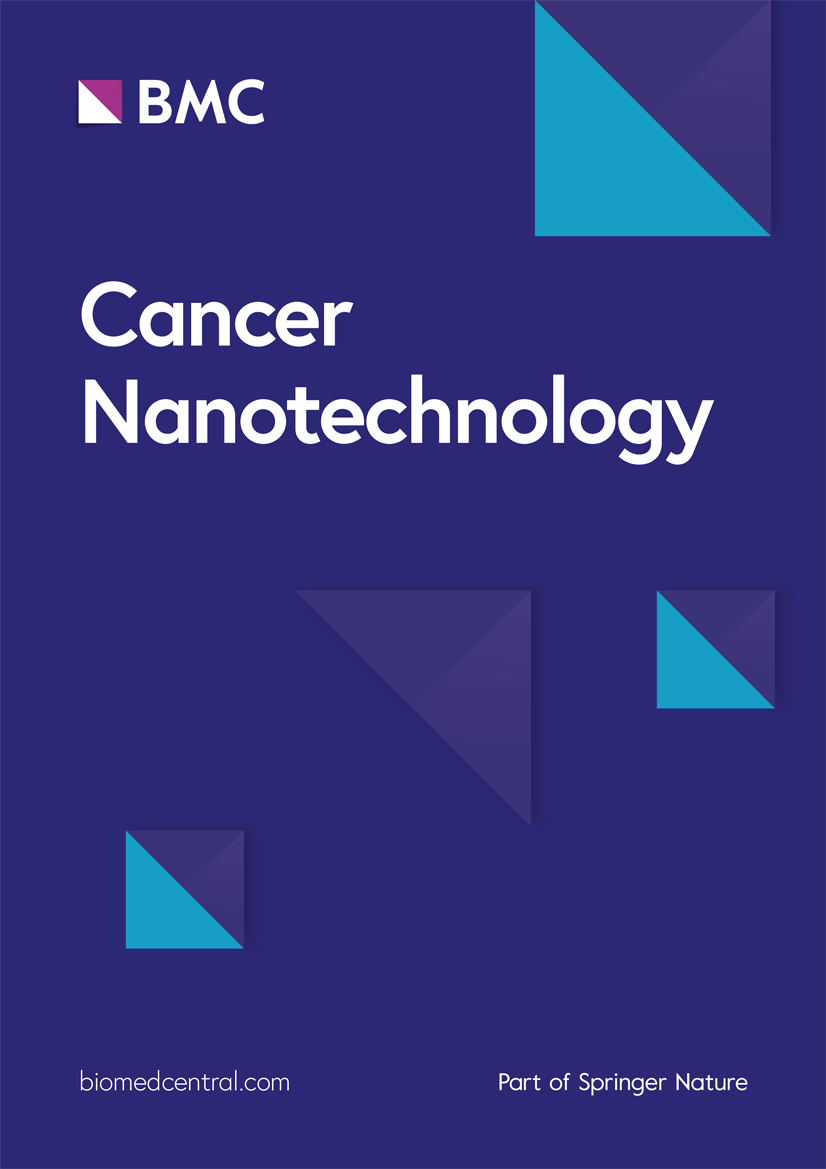pH-sensitive polymeric micelles enhance the co-delivery of doxorubicin and docetaxel: an emerging modality for treating breast cancer
IF 4.8
2区 工程技术
Q2 NANOSCIENCE & NANOTECHNOLOGY
引用次数: 0
Abstract
Designing and preparing a co-delivery system based on polymeric micelles have attracted in recent years. Co-delivery of anti-cancer agents within pH-sensitive polymeric micelles could provide superior advantages over the co-administration of free drugs, since it enables simultaneous delivery of drugs to reach an optimum synergistic dose right to the tumor. DOX was conjugated to the polymer through a hydrazine linker by Schiff’s base reaction. Then, DTX was encapsulated into the core of the polymer to the resulting DOX-Hyd-PM/DTX micelle with optimum molar ratios of 1:1 and 1:5 (DOX/DTX). The final formulations showed the desired particle size and increased release of DOX and DTX in acidic media (pH 5.5). The cytotoxicity assay of DOX-Hyd-PM/DTX indicated the highest synergistic effect on both 4T1 and TUBO cell lines over other formulations. Interestingly, in accordance with in vitro results, DOX-Hyd-PM/DTX revealed a promising anti-tumor activity in mice-bearing 4T1 breast cancer tumor with higher tumor accumulation of DOX and DTX after 24 h compared to free drugs combination. These findings point to the potential use of such smart nanodrug delivery systems in cancer treatment, where the synergistic effect of both drugs may be used to enhance therapeutic response.对 pH 值敏感的聚合物胶束可增强多柔比星和多西他赛的联合给药:一种治疗乳腺癌的新兴模式
近年来,设计和制备基于聚合物胶束的联合给药系统备受关注。在对 pH 值敏感的聚合物胶束中联合投放抗癌药物比联合投放游离药物更有优势,因为它能同时投放药物,以达到直达肿瘤的最佳协同剂量。通过席夫碱反应,DOX 通过肼连接物与聚合物共轭。然后,DTX 被包裹到聚合物的核心中,形成 DOX-Hyd-PM/DTX 胶束,最佳摩尔比为 1:1 和 1:5(DOX/DTX)。最终制剂显示出理想的粒度,并增加了 DOX 和 DTX 在酸性介质(pH 5.5)中的释放量。DOX-Hyd-PM/DTX的细胞毒性试验表明,与其他制剂相比,DOX-Hyd-PM/DTX对4T1和TUBO细胞株的协同效应最高。有趣的是,与体外结果一致,DOX-Hyd-PM/DTX 在小鼠 4T1 乳腺癌肿瘤中显示出良好的抗肿瘤活性,与游离药物组合相比,24 小时后 DOX 和 DTX 在肿瘤中的蓄积量更高。这些研究结果表明,这种智能纳米给药系统可用于癌症治疗,两种药物的协同作用可提高治疗效果。
本文章由计算机程序翻译,如有差异,请以英文原文为准。
求助全文
约1分钟内获得全文
求助全文
来源期刊

Cancer Nanotechnology
Pharmacology, Toxicology and Pharmaceutics-Pharmaceutical Science
CiteScore
5.20
自引率
1.80%
发文量
37
审稿时长
15 weeks
期刊介绍:
Aim:
Recognizing cancer as a group of diseases caused by nanostructural problems (i.e. with DNA) and also that there are unique benefits to approaches inherently involving nanoscale structures and processes to treat the disease, the journal Cancer Nanotechnology aims to disseminate cutting edge research; to promote emerging trends in the use of nanostructures and the induction of nanoscale processes for the prevention, diagnosis, treatment of cancer; and to cover related ancillary areas.
Scope:
Articles describing original research in the use of nanostructures and the induction of nanoscale processes for the prevention, diagnosis and treatment of cancer (open submission process). Review, editorial and tutorial articles picking up on subthemes of emerging importance where nanostructures and the induction of nanoscale processes are used for the prevention, diagnosis and treatment of cancer.
 求助内容:
求助内容: 应助结果提醒方式:
应助结果提醒方式:


